Gas Hydrates - Seismics
MSc-2 Gas Hydrates: Formation, Detection, Relevance (Spiess, 2 out of 10 blocks)
The course introduces into the basics of gas hydrates as they can be imaged and quantified by seismic methods. Like seismic exploration of other resources, quantitative approaches have been developed to locate these resources, to determine the concentration and to budget the volume. Based on MTU seismic data collected in gash ydrate provinces (Congo, Gulf of Mexica, Cascadia Margin), recognition of GHs is trained.
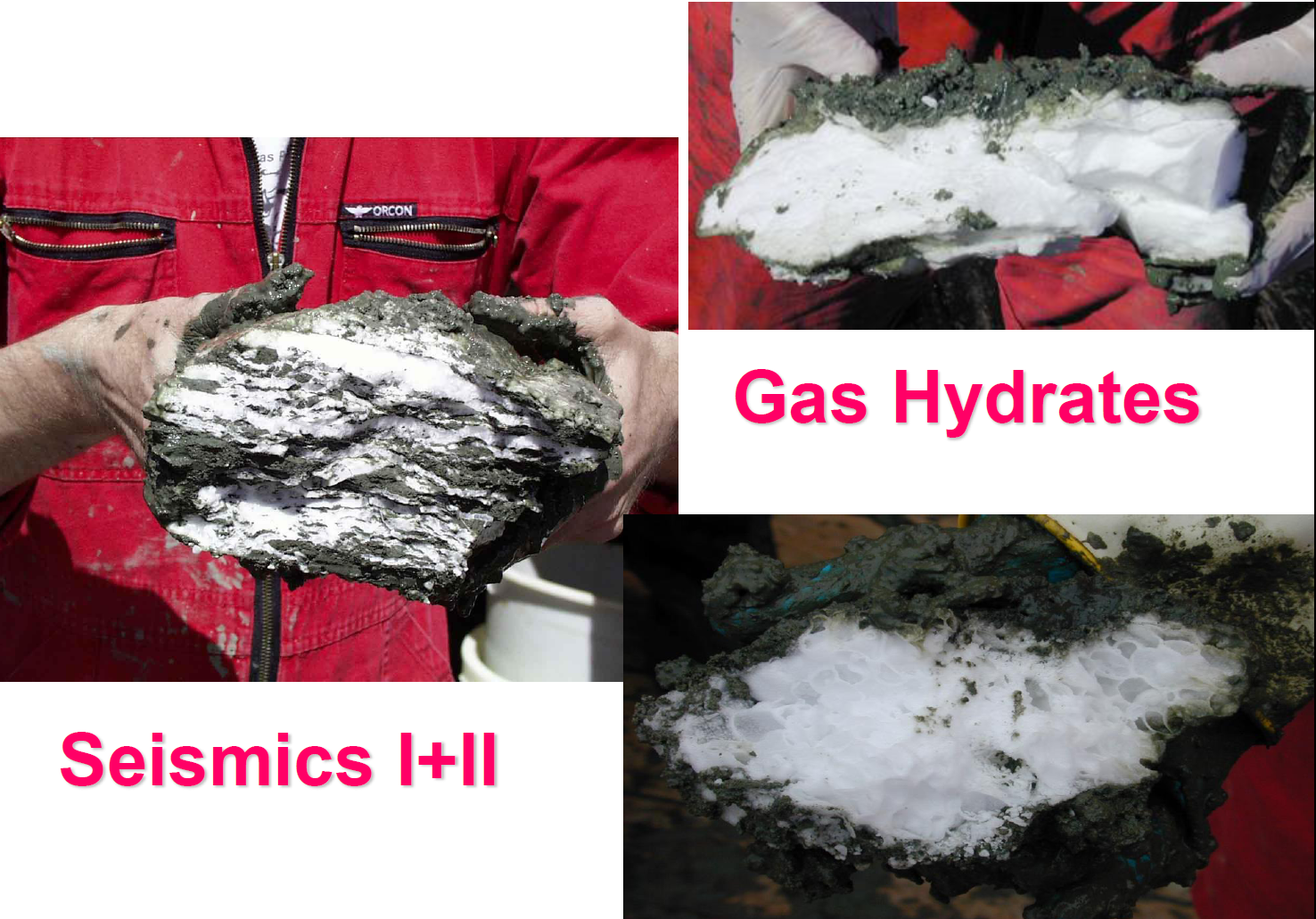
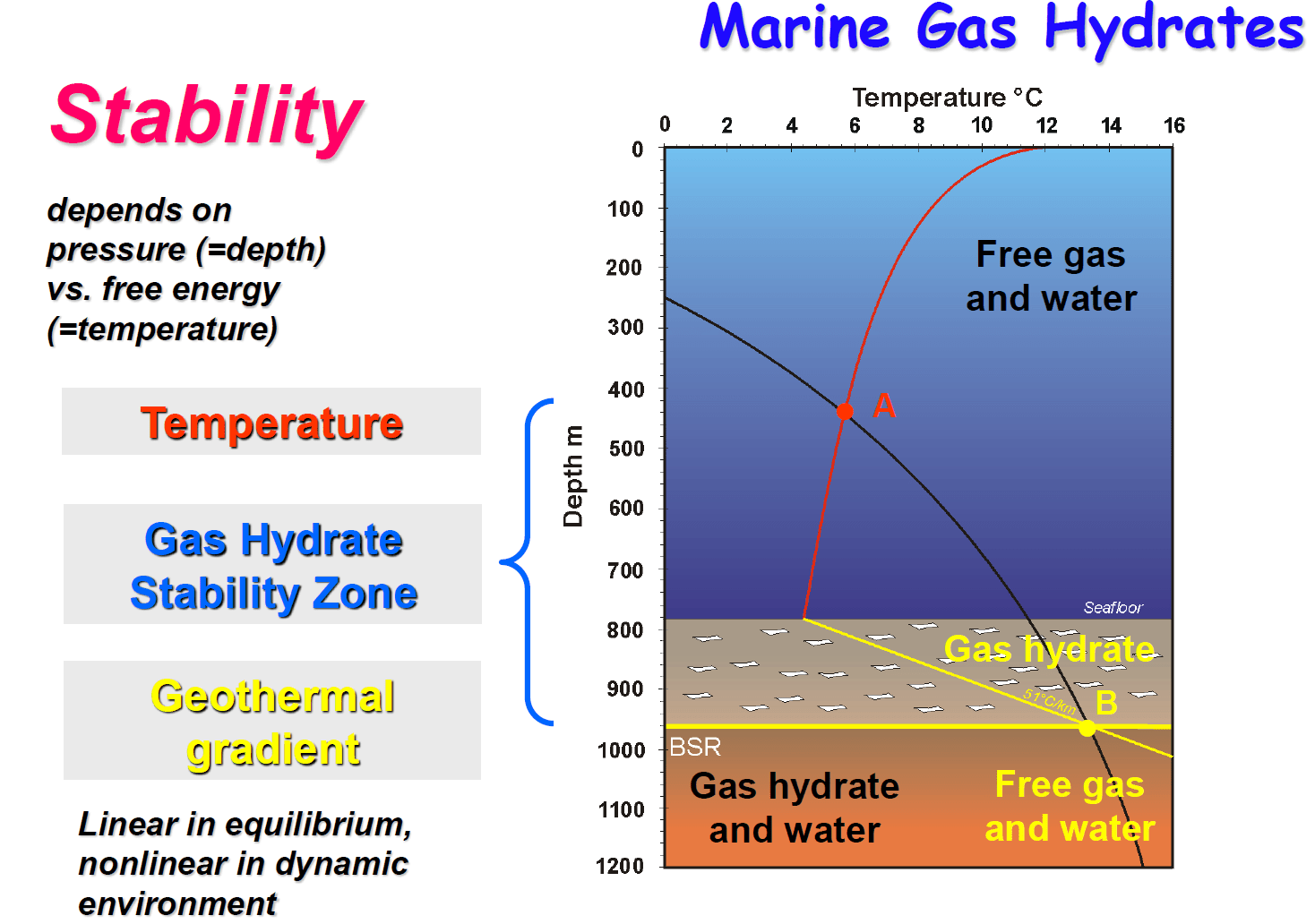
Gas hydrates form an ice-like structure, which may form crystals of anomalous physical properties within a range of the environmental parameters Temperature and Pressure. For high pressure and low temperature, these GH crystals are stable within the sediment (and water column). The higher the proportion of GH is within the sediment matrix, the higher the sound velocity is. Seismic velocity determination therefore allows to identify occurences of GHs.
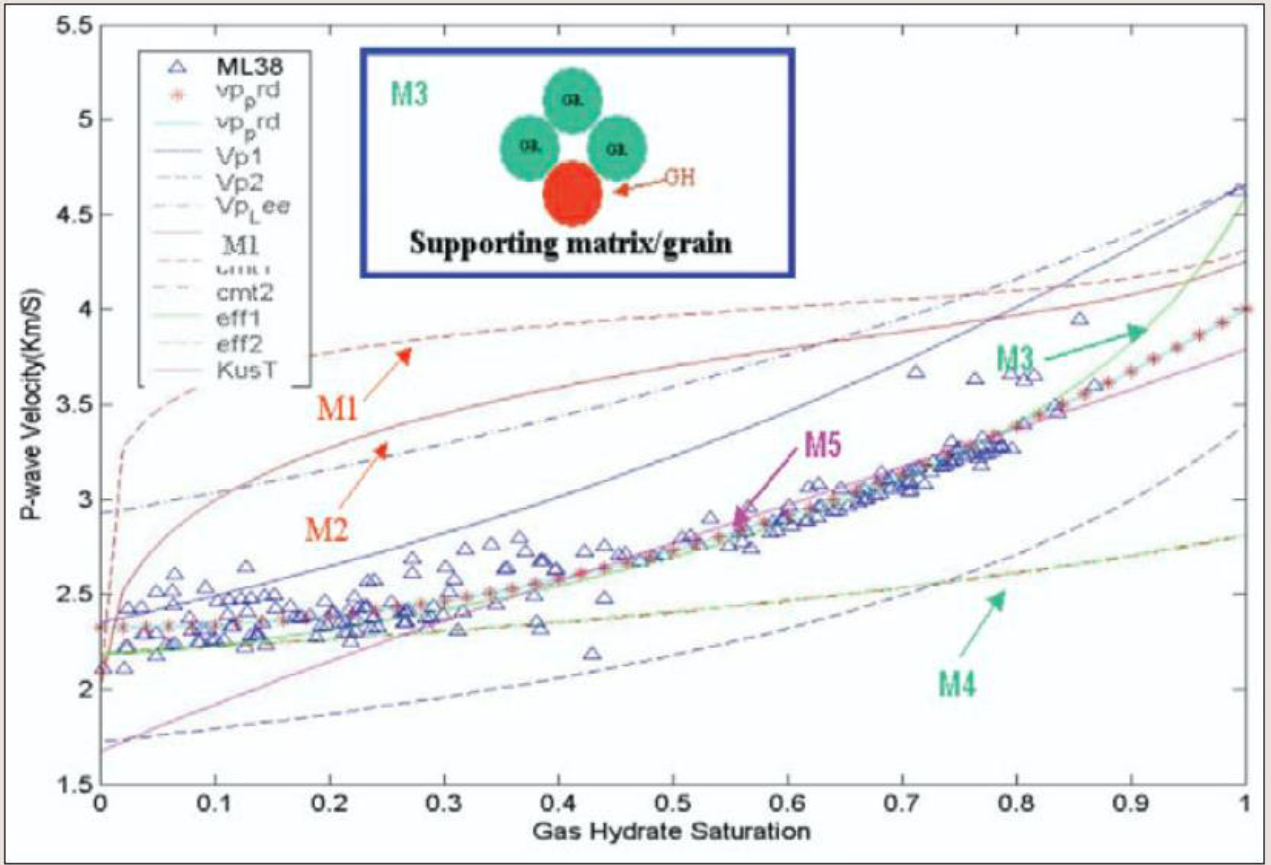
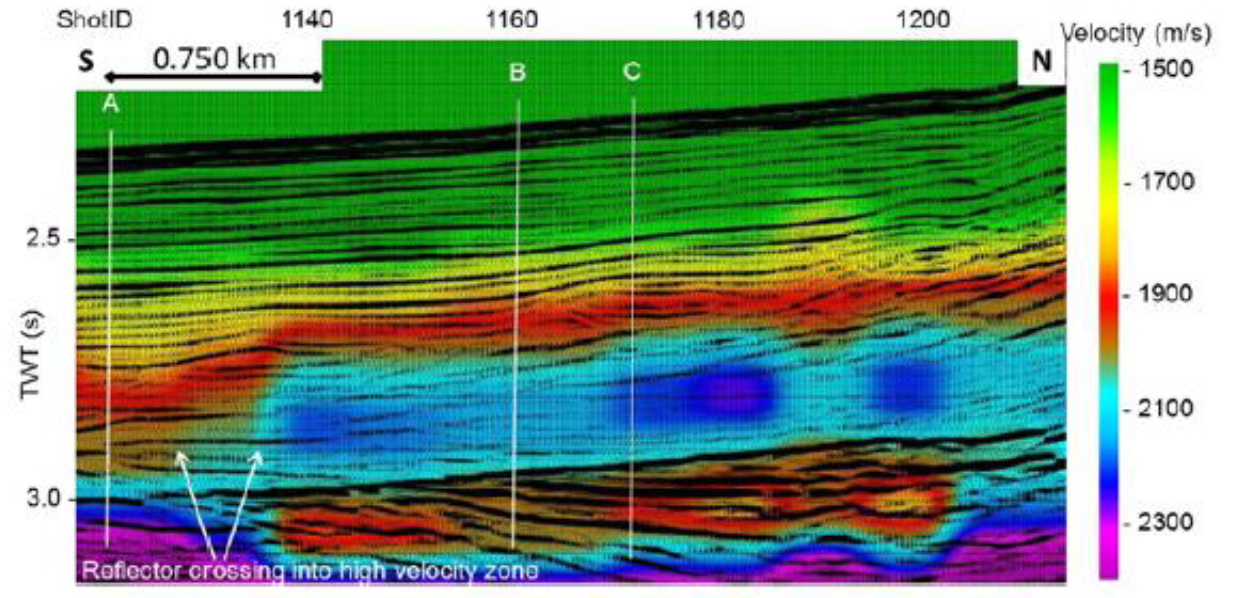
On microscales, GH may occur in different ways within the pore space or around grains. Studies on boreholes using cross-hole seismic experiments have shown that GH grains support the existing matrix. With this knowledge, even GH concentrations can be determined from velocity, both from p-wave and shear wave velocities.
Beneath the base of the gashydrate stability zone, free gas exists and can accumulate, thus causing a strong inversion of the product of velocity and density (=seismic impedance). At this interface a strong reflection of reversed polarity is observed, which is called bottom-simulating reflector (=BSR).
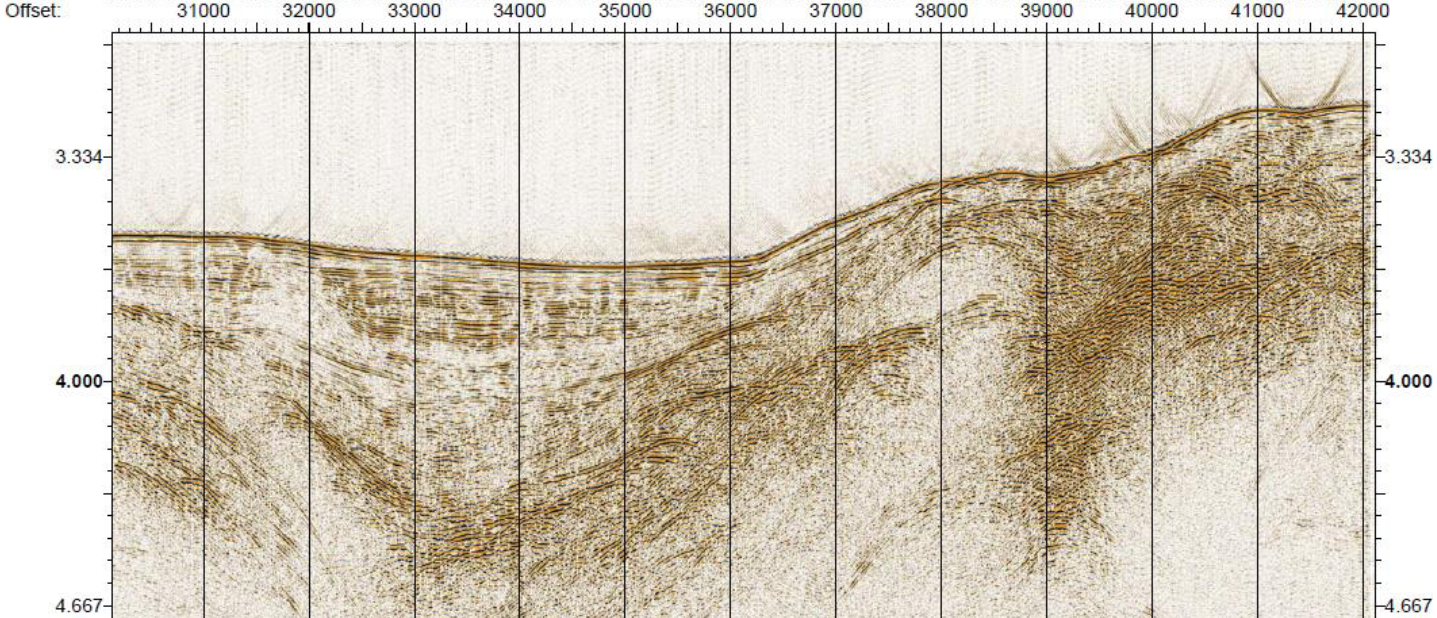
Seismic data are therefore a suitable tool in the exploration of gas hydrates, together with heat flow measurements to predict the depth of the base of the gashydrate stability zone (BGHSZ) and to reconstruct the geothermal gradient.
